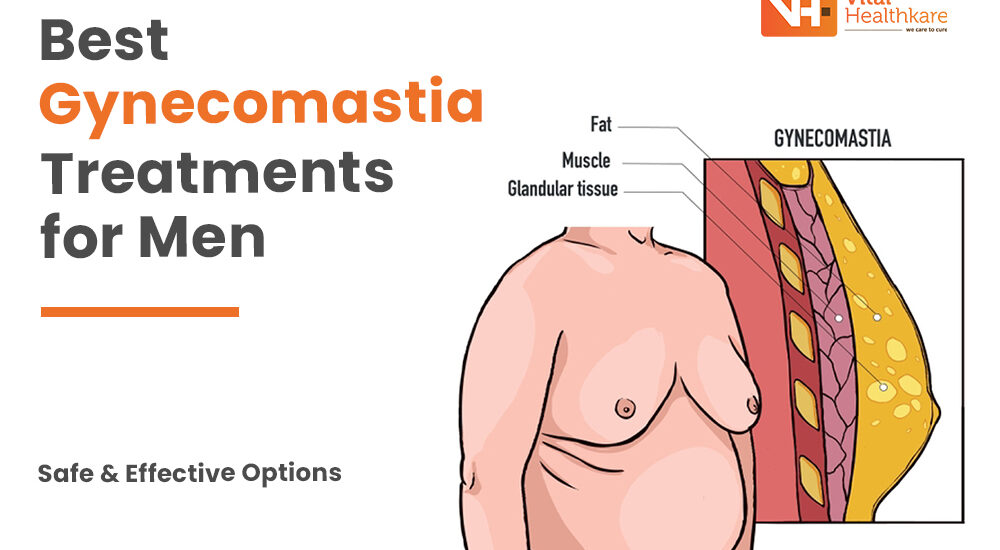Introduction: What is Gynecomastia?
Gynecomastia is a condition in men where the breast tissue becomes enlarged, often causing physical discomfort and emotional distress. Though not life-threatening, it can affect confidence, especially when wearing fitted clothing or going shirtless. If you’ve noticed unusual swelling or tenderness in your chest, you might be experiencing this common condition.
Fortunately, there are proven gynecomastia treatment for men, including both non-surgical and surgical solutions. In this blog, we’ll explore what causes gynecomastia, how to identify it, and the most effective treatment options available today.
Common Causes of Gynecomastia
Gynecomastia is often linked to hormonal imbalances—specifically an imbalance between estrogen and testosterone. However, several other factors can also contribute:
1. Hormonal Changes
-
Most common during puberty and older age.
-
Increased estrogen levels or decreased testosterone can lead to breast tissue growth.
2. Medications
-
Certain drugs such as anti-androgens, anabolic steroids, anti-anxiety medications, and some antibiotics can trigger gynecomastia.
3. Substance Use
-
Alcohol, marijuana, heroin, and methadone have been linked to hormone disruption and breast tissue development.
4. Health Conditions
-
Liver disease, kidney failure, tumors, and thyroid disorders may cause hormonal fluctuations leading to gynecomastia.
Symptoms of Gynecomastia
Gynecomastia can occur in one or both breasts and may present with:
-
Swollen breast gland tissue
-
Breast tenderness or pain
-
Nipple discharge (in rare cases)
-
Asymmetrical chest appearance
-
Psychological discomfort or embarrassment
If you notice these signs, especially if they persist for several months, it’s time to consult a medical expert.
Diagnosis and When to See a Doctor
Your doctor will:
-
Conduct a physical examination
-
Ask about your medical history and medications
-
Recommend blood tests and imaging (ultrasound or mammogram) if needed
Correct diagnosis is key, especially to rule out conditions like pseudogynecomastia (fat buildup without glandular growth) or male breast cancer (very rare).
Gynecomastia Treatment Options for Men
Treatment depends on the cause, severity, and how long you’ve had the condition. Options include:
1. Lifestyle Changes
If gynecomastia is caused by obesity or lifestyle factors:
-
Focus on weight loss and chest-strengthening exercises
-
Avoid alcohol, recreational drugs, and steroids
-
Review and adjust medications with your doctor
2. Medications
No, hormonal therapy is generally not effective in treating gynecomastia, especially in later stages. While it may be considered in early cases, results are often limited and inconsistent.
3. Male Breast Reduction Surgery
When lifestyle changes and medications are ineffective, male breast reduction surgery becomes the most reliable solution. This procedure involves:
-
Liposuction: Removes excess fatty tissue
-
Gland excision: Removes dense glandular tissue
-
Often performed under local or general anesthesia
-
Quick recovery and minimal scarring with advanced techniques
This surgery offers permanent results, especially when paired with a healthy lifestyle post-recovery.
Recovery and Results
-
Most patients return to work within a week after surgery.
-
Bruising and swelling subside in 2–3 weeks.
-
Full recovery typically takes 4–6 weeks.
-
Final results: A flatter, firmer, and more masculine chest contour.
Post-surgery, maintaining a healthy weight and avoiding steroids or drug use is critical to prevent recurrence.
Conclusion
Gynecomastia can be frustrating, but it’s a treatable condition. From identifying symptoms to exploring treatment—especially the long-lasting results of male breast reduction surgery—you have options to regain your confidence and comfort.
If you’re struggling with gynecomastia and want personalized advice, consult a board-certified plastic surgeon or a gynecomastia specialist in your area.

Is Weight Loss Surgery Right for You?
If you’ve tried every diet and exercise plan without success, weight loss surgery in India might be the right choice. It’s not just a cosmetic fix—it’s a medically supervised solution for long-term obesity management.
Before making a decision, consult with a qualified bariatric surgeon to determine the best procedure for your body type, BMI, and medical history.
Final Thoughts
Weight loss surgery is a transformative tool for managing chronic obesity, reversing metabolic diseases, and improving quality of life. However, success depends on lifelong commitment to healthy eating, physical activity, and follow-up care.
If you’re considering bariatric surgery in India, our team of experts is here to guide you every step of the way—from initial consultation to post-op support.


